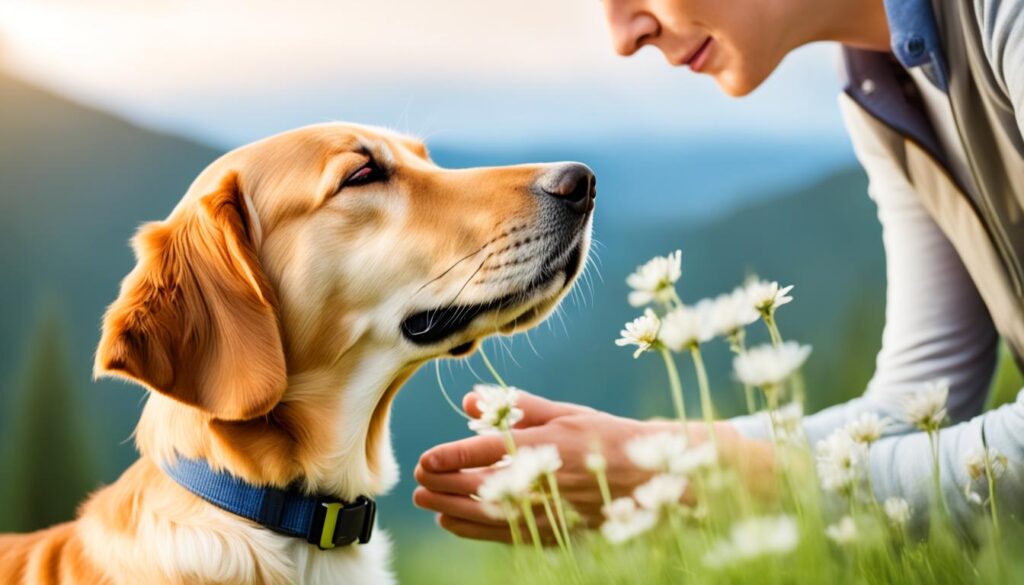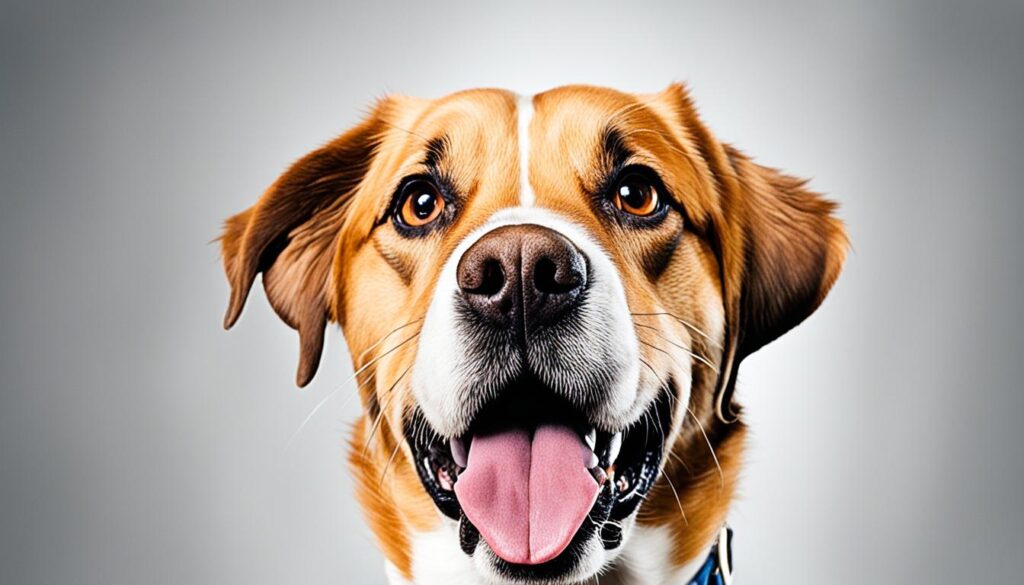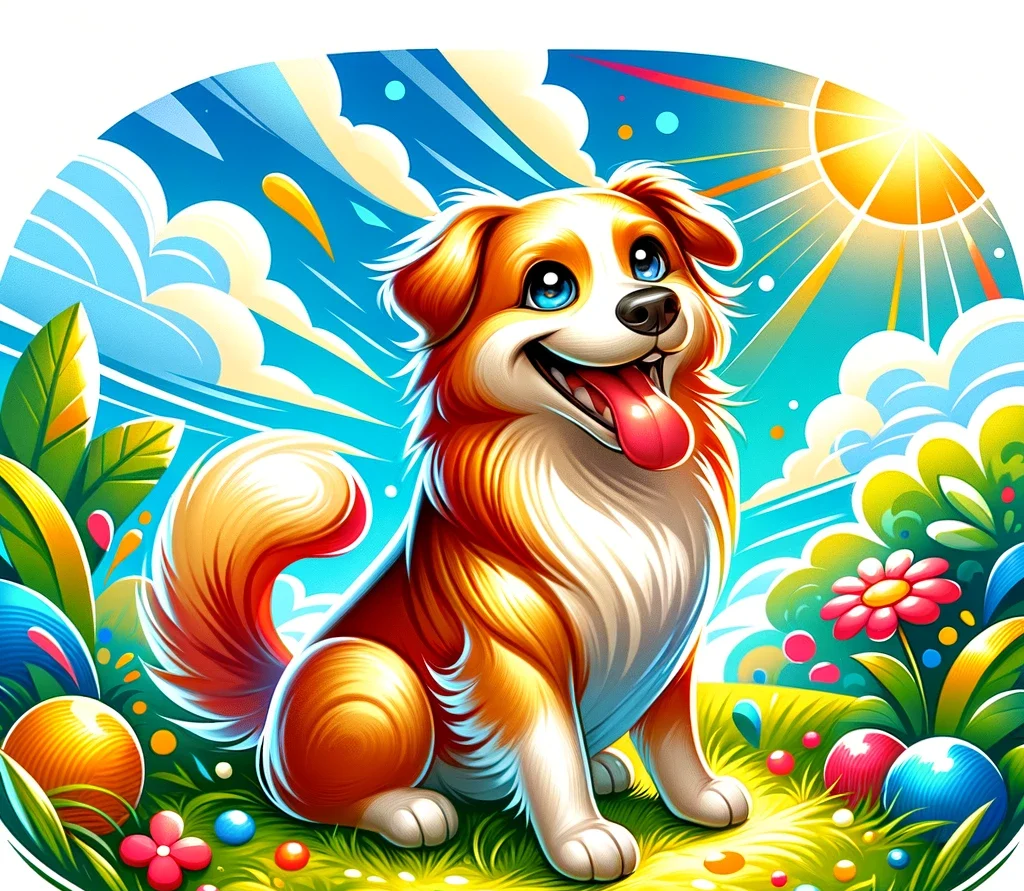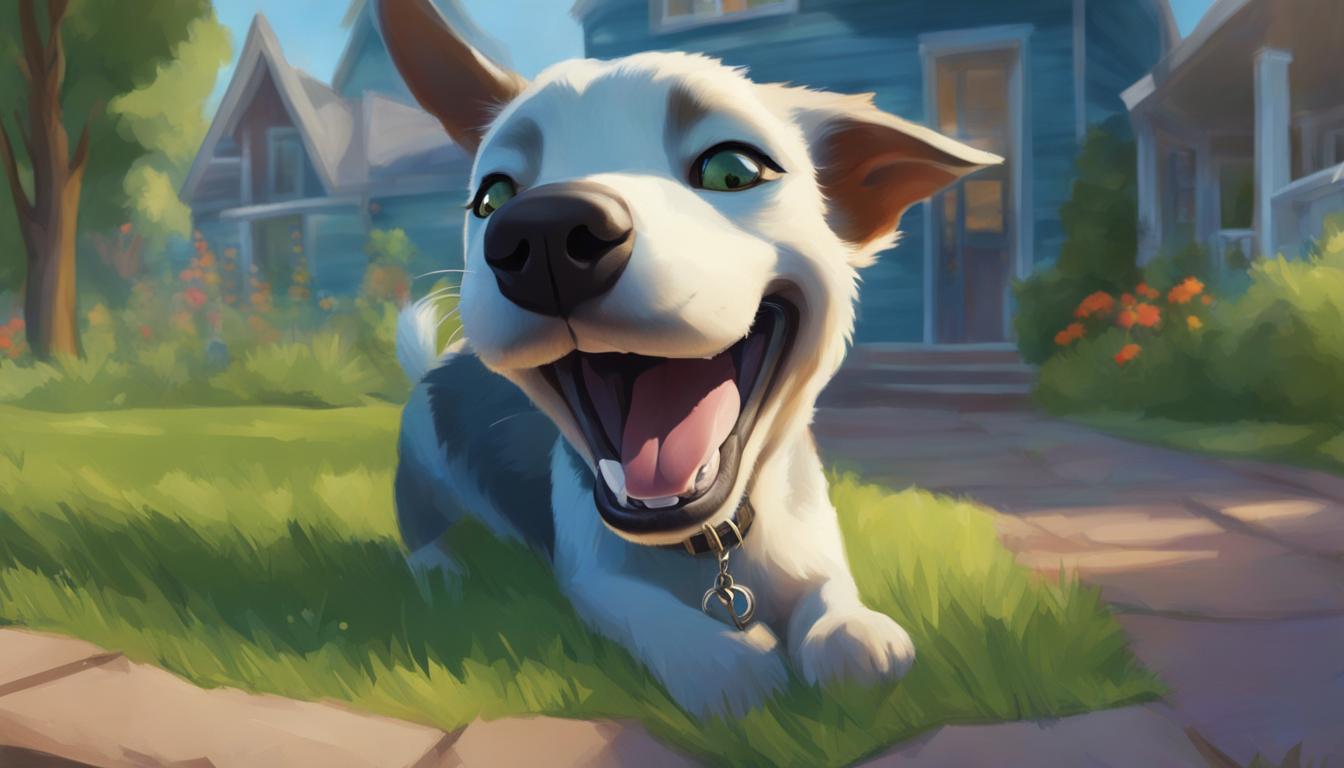As an Amazon Associate I earn from qualifying purchases.
Imagine this: you’re sitting peacefully on the couch, enjoying a quiet evening with your furry best friend nestled by your side. Suddenly, out of nowhere, they start making strange noises as if they’re gasping for air. Your heart skips a beat, and panic sets in. Is something terribly wrong? Are they in pain? You feel helpless and desperate to find a solution.
Well, fret not, dear dog parent! What you’re witnessing is likely a case of reverse sneezing, a peculiar but relatively common phenomenon in dogs. While it may sound alarming, reverse sneezing is usually harmless and can be easily managed. So, take a deep breath and let’s explore this mysterious behavior, decode its causes, and uncover the secrets to soothing your furry friend.
Key Takeaways:
- Reverse sneezing in dogs is a common occurrence that causes them to rapidly pull air into their nose rather than blowing it out.
- It can be triggered by factors such as dry or dusty conditions, nasal irritation, pollen, or seasonal allergies.
- While reverse sneezing is usually not dangerous, frequent episodes may indicate an underlying allergy or infection.
- During a reverse sneezing episode, offering gentle reassurance and employing distraction techniques can help calm your dog.
- If the episodes are frequent, severe, or accompanied by other concerning symptoms, it is advisable to consult a veterinarian.
What Causes Reverse Sneezing in Dogs?
The exact cause of reverse sneezing in dogs is not well understood. It is believed to be triggered by the same factors that cause regular sneezing, such as dry or dusty conditions, nasal irritation, pollen, or seasonal allergies. Dogs with long, narrow snouts are more prone to reverse sneezing, although the reason behind this correlation is unknown. While the loud snorting noises can be alarming, reverse sneezing itself is not dangerous.
Recognizing the Symptoms of Reverse Sneezing in Dogs
When it comes to reverse sneezing in dogs, recognizing the symptoms is crucial in understanding and addressing this peculiar behavior. Reverse sneezing episodes can cause concern for pet owners, but with a keen eye and an understanding of the signs, you can help your canine companion navigate through these episodes with ease.
The primary symptom of reverse sneezing in dogs is a distinctive snorting sound that is unlike a regular sneeze. This sound can be quite alarming, but it’s important to remember that it’s a natural response and typically harmless. In addition to the snorting sound, there are several other telltale signs to look out for:
- Rapid and forceful inhalation
- Backward head and neck extension
- Stiffened body posture
- Eye watering or bulging
These episodes usually last for a few seconds to a minute and resolve on their own, without causing any harm to your furry friend. However, if you notice that your dog experiences frequent, severe, or prolonged episodes of reverse sneezing, or if there are other concerning symptoms present, it’s advisable to consult a veterinarian for proper evaluation and guidance.
Understanding the symptoms of reverse sneezing in dogs allows you to differentiate it from other potential respiratory issues. By staying vigilant and being aware of your dog’s behavior, you can provide the necessary support and reassurance during these episodes.
How to Help Your Dog during a Reverse Sneezing Episode
While reverse sneezing episodes in dogs usually resolve on their own, there are some measures you can take to help your dog during an episode.
Offering reassurance through gentle strokes and reassuring words can help calm your dog and potentially end the episode more quickly. Remember, your pooch looks up to you for comfort and security, so let them know you’re there for them!
Distraction techniques can also be effective in alleviating a reverse sneezing episode. Try offering a tasty treat or redirecting your dog’s attention to a favorite toy or game. The key is to divert their focus away from the episode and onto something positive.
It is important to stay calm and composed during the episode. Dogs are perceptive creatures and can pick up on your energy. If you’re panicking or showing signs of stress, it may exacerbate your dog’s discomfort. So take a deep breath, stay calm, and provide a reassuring presence for your furry friend.
Remember, seek veterinary care if your dog’s reverse sneezing episodes are frequent, severe, or accompanied by other concerning symptoms. A professional evaluation can help determine if there are any underlying issues that need to be addressed. In the meantime, your love and support can go a long way in comforting your dog during these episodes.

| Helpful Tips to Assist Your Dog during Reverse Sneezing Episodes |
|---|
| 1. Reassurance |
| Provide gentle strokes and soothing words to calm your dog. |
| 2. Distraction |
| Offer a tasty treat or redirect your dog’s attention to a toy or game. |
| 3. Stay Calm |
| Remain composed to avoid adding stress to your dog’s experience. |
When to Seek Veterinary Care for Reverse Sneezing in Dogs
In most cases, reverse sneezing in dogs does not require veterinary intervention. However, if your dog experiences frequent or severe episodes, has difficulty breathing, or shows signs of distress, it is advisable to consult a veterinarian. The veterinarian can evaluate your dog’s overall health, determine if there are any underlying allergies or infections contributing to the reverse sneezing, and recommend appropriate treatment options if necessary.
If your furry friend is having reverse sneezing episodes that are becoming more frequent or intense, it’s time to get professional insights. Dogs may display varied reactions during reverse sneezing episodes, from momentary confusion to increased anxiety and panic. When your dog stops and tries to catch their breath after one of these episodes, observing their distress is heartbreaking. Fortunately, veterinary care can help ease their discomfort and improve their quality of life.
“I panicked the first time my dog had a reverse sneezing episode. I didn’t know what was happening or if I should be concerned. Luckily, I called my vet, and they reassured me that reverse sneezing is generally harmless. However, they also explained that if my dog had more frequent or severe episodes, it could indicate an underlying issue that needs to be addressed.”
During your visit to the veterinarian, they will conduct a thorough examination to determine the cause of your dog’s reverse sneezing episodes. They may ask questions about your dog’s environment, recent changes in their routine, or any potential allergens they may have been exposed to. Your vet may also recommend diagnostic tests, such as blood work or allergy testing, to rule out any underlying conditions. Based on their findings, they will develop a personalized treatment plan to help manage your dog’s reverse sneezing episodes and improve their overall respiratory health.
Remember, your veterinarian is your trusted partner in caring for your dog’s health. They have the expertise and knowledge to guide you through any concerns or questions you may have regarding reverse sneezing. Seeking veterinary care when necessary ensures that your dog receives the appropriate treatment and support tailored to their individual needs.
What to Expect During a Veterinary Visit for Reverse Sneezing
When you visit your veterinarian for your dog’s reverse sneezing, they will likely perform a comprehensive examination to assess your dog’s overall health. They may also ask you about specific details regarding the reverse sneezing episodes, such as frequency, duration, and any triggers you have noticed. The vet may use this information to pinpoint any underlying causes and recommend appropriate treatments or lifestyle adjustments to manage the reverse sneezing more effectively.
Your veterinarian may also provide guidance on how to alleviate your dog’s symptoms during an episode and prevent potential triggers in your dog’s environment. They may suggest modifications to your dog’s diet, grooming routines, or environmental conditions to minimize the occurrence of reverse sneezing episodes.
| Treatment Options for Reverse Sneezing in Dogs |
|---|
|
Keep in mind that each dog is unique, and the treatment approach may vary depending on their individual needs. Your veterinarian will work closely with you to develop a treatment plan that is safe, effective, and tailored to your dog’s specific condition.
Common Questions about Reverse Sneezing in Dogs
As a pet owner, you may have some questions about your dog’s reverse sneezing episodes. Let’s shed some light on these frequently asked questions:
Can drinking water trigger reverse sneezing?
Yes, reverse sneezing can be triggered by drinking water, especially when your dog gets overly excited. Sometimes, a small amount of water may enter the nasal passages, causing temporary irritation and triggering a reverse sneezing episode. While it can sound alarming, this is usually not dangerous and will subside on its own.
Is reverse sneezing a sign of COVID-19?
No, reverse sneezing is not a specific symptom of COVID-19 in dogs. However, it’s important to note that reverse sneezing can be a sign of other allergies or respiratory infections. If your dog shows other concerning symptoms or if you have any doubts, consult a veterinarian for proper evaluation and guidance.
Is reverse sneezing more common at night or after swimming?
Reverse sneezing can occur at any time and is not necessarily more common during specific times like night or after swimming. However, after drinking or swimming, dogs may become more prone to reverse sneezing due to excitement or water entering the nasal passages. Again, in most cases, this is temporary and not dangerous.
Can reverse sneezing be dangerous or fatal?
Reverse sneezing itself is typically not dangerous or fatal. It is a normal protective reflex that helps clear irritants from the nasal passages. However, if your dog experiences frequent or severe episodes, it could be an indication of an underlying issue such as allergies or respiratory infections. If you’re concerned, it’s best to consult a veterinarian for further evaluation and appropriate treatment.
An image that showcases a dog experiencing a reverse sneezing episode can be found below:

Whimsical Causes of Reverse Sneezing in Dogs
While the exact causes of reverse sneezing in dogs are not fully understood, some whimsical explanations have been proposed. These include imaginary ticklers in the nasal passages, surprise visits from mischievous circus clowns, or participation in a secret society of competitive sneezers. These imaginative causes are lighthearted ways to describe the mysterious nature of reverse sneezing, but the actual triggers are likely related to environmental factors, irritants, or allergies.
Reverse sneezing is a peculiar behavior that can leave pet owners wondering why their furry friends experience this strange phenomenon. While the whimsical causes mentioned may bring a smile to your face, it’s essential to remember that they’re just playful ideas. In reality, reverse sneezing in dogs is most commonly triggered by environmental factors, such as dry or dusty conditions. It can also be a response to nasal irritation caused by allergens or irritants present in the environment. Understanding the potential triggers can help you take appropriate measures to minimize your dog’s reverse sneezing episodes.
If you’re curious about the triggers, keep reading to learn more about the mysterious nature of reverse sneezing in dogs and how to navigate this peculiar behavior.
Conclusion
So, your furry friend has been reverse sneezing, creating moments of panic and confusion. But fret not, reverse sneezing in dogs is a common and usually harmless behavior. Think of it as your dog’s unique way of clearing their airways, like a sneeze in reverse!
While it may sound alarming, reverse sneezing in dogs typically doesn’t require additional intervention. By providing gentle reassurance and employing distraction techniques, such as offering a treat or redirecting their attention, you can help calm your dog during an episode.
However, if your dog experiences frequent, severe, or concerning reverse sneezing episodes, it’s always a good idea to consult a veterinarian for proper evaluation and guidance. They can determine if there are any underlying allergies or infections contributing to the reverse sneezing and recommend appropriate treatment options if necessary.
By understanding the causes, symptoms, and management of reverse sneezing, you can navigate this peculiar behavior with confidence and ensure the well-being of your beloved four-legged companion. Remember, reverse sneezing in dogs is just another quirk that makes them unique!
FAQ
What causes reverse sneezing in dogs?
How can I recognize the symptoms of reverse sneezing in dogs?
How can I help my dog during a reverse sneezing episode?
When should I seek veterinary care for reverse sneezing in dogs?
What are some common questions about reverse sneezing in dogs?
What are some whimsical causes of reverse sneezing in dogs?
Source Links
- https://rockykanaka.com/dog-reverse-sneezing/
- https://www.petzcareindia.com/post/the-hilarious-hiccups-of-reverse-sneezing-in-a-quirky-phenomenon-in-pet-dogs
- https://independenceveterinaryclinic.com/pet-topics/kennel-cough/
As an Amazon Associate I earn from qualifying purchases.

